We celebrate the individual faces that make up our community and the work that they do. From traditional healers to JJVS field workers, everyone plays their part to build up our communities, yet so much of their hard work remains unrecognized. These are the Forgotten Faces of Rural Rajasthan.
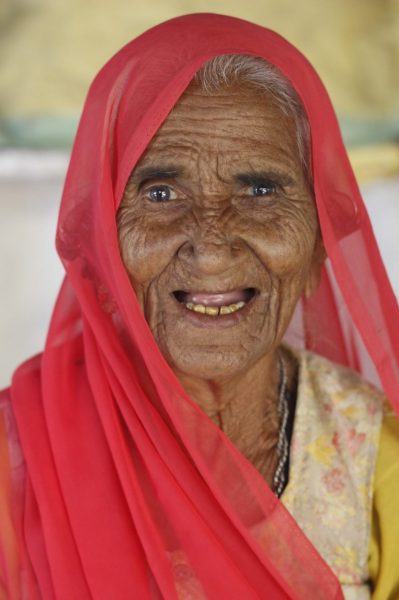
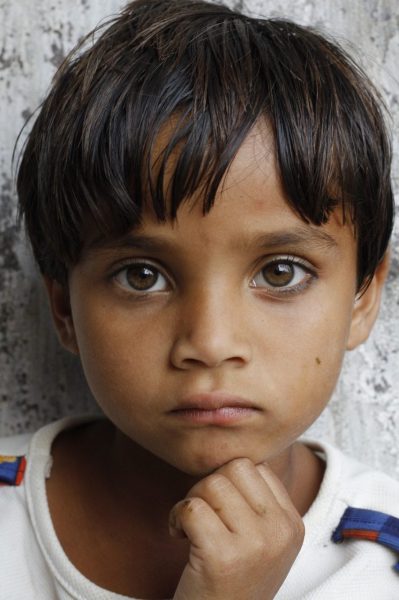
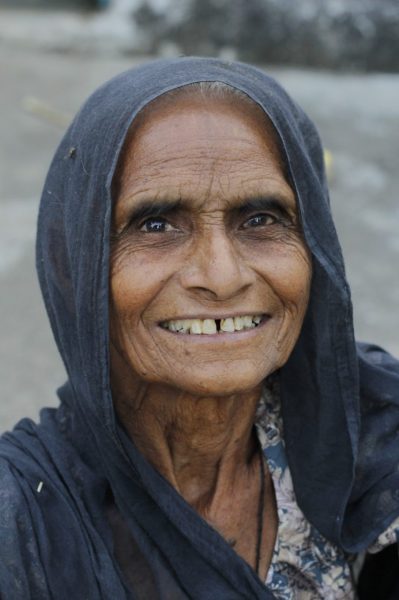
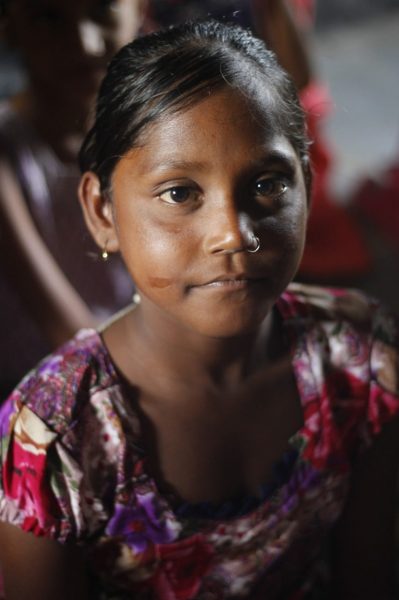
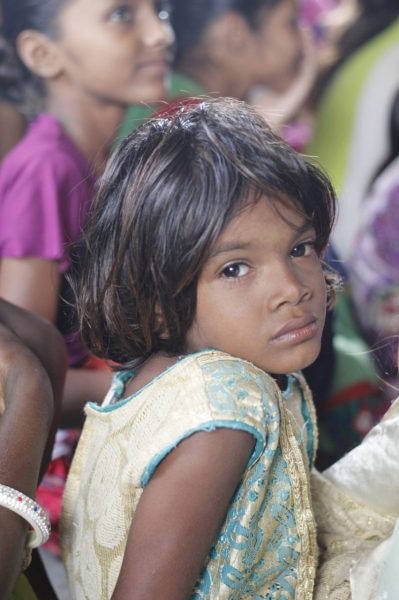
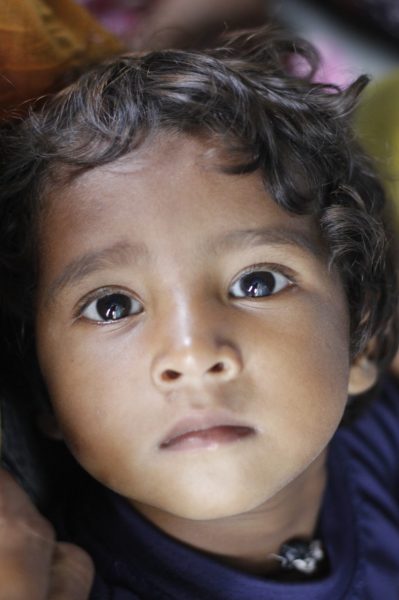
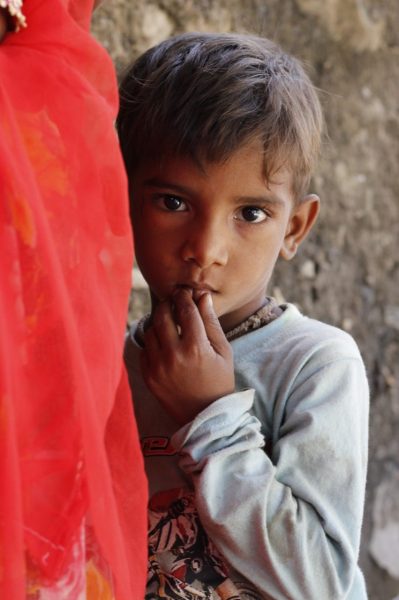
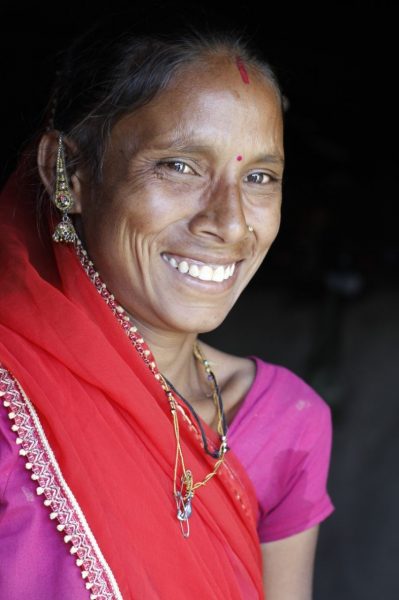
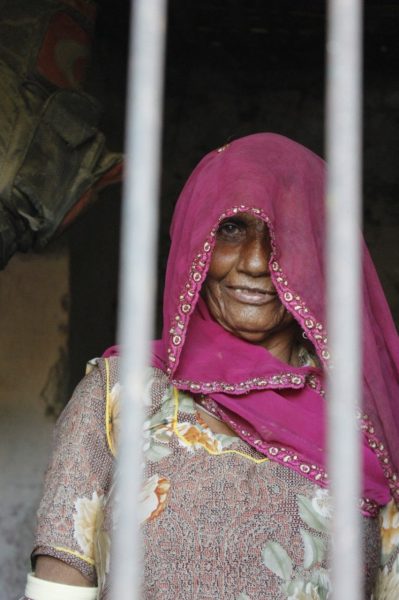
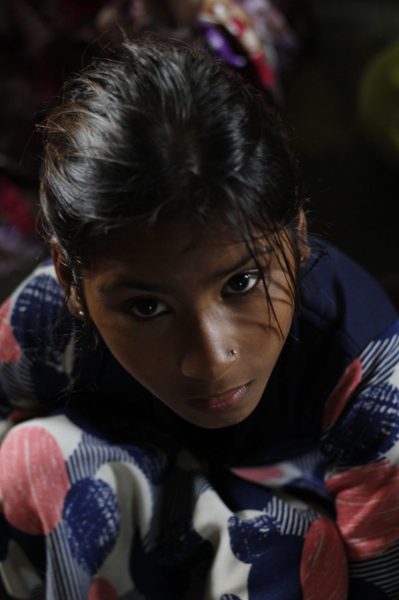

Pratabi Bai
“We must take the old systems [of medicine] more seriously if we are to achieve the goal of health for all”
Pratapi Bai is one of the guni masters at JJVS, known for her skills at the local, national and international level. She began learning about traditional medicine at age 10 while watching her father, a locally renowned traditional healer, provide treatment for over 400 households in the area. It was very uncommon for women to be trained as Gunis in rural Rajasthan. She often was tasked with picking medicinal plants from the garden and assisting her father on various cases, thus receiving informal training in bone setting, asthma, fever and urinary tract problems. Her mother was also a healer and had extensive knowledge in women’s’ health issues, which she passed on to Pratapi. At age 16, Pratapi was married to Chena Ramji, a farmer who is supportive of her work as a traditional healer and helps collect herbs for her medicinal treatments. She gained experience as a Traditional Birth Attendant and by age 20 began delivering babies in her village. In 1993, she joined JJVS and was able to receive training to become an official Guni. This training consisted of classes in biology, natural healing, and medicinal plants, as well as sharing of traditional medicine knowledge by all Gunis present. This training expanded her expertise of various health issues. Now Pratapi Bai is able to treat kidney stones, hemorrhoids, and blood blockages. By closely collaborating with JJVS and other Gunis, she has been able to share her familial knowledge as well as gain new knowledge from others that has helped her provide better care for her patients. Her work as a traditional healer and midwife granted her the trust and gratitude from her village, and she was elected as a leader of the local government Panchayat.
Becoming both a political leader and a famous healer was not easy. It was taboo for a woman to leave the village to become educated, and her husband was ridiculed for having a wife who was perceived as too independent. After receiving international fame, she finally received the approval and pride of her village. She was invited to attend the 1994 UN Fourth World Conference on Women in Beijing, China and was able to inspire and be inspired by powerful and empowering women from around the world. Today, Pratapi Bai delivers children, prepares medicinal treatments, all approved by Ayurvedic doctors, and treats patients through the Guni Training and Treatment Center (GTTC). She is an active educator of both women and men in childbirth techniques and guni knowledge through JJVS, and a firm believer in community development through the revitalization of traditional and more accessible systems of medicine.
Pratapi Bai is one of the guni masters at JJVS, known for her skills at the local, national and international level. She began learning about traditional medicine at age 10 while watching her father, a locally renowned traditional healer, provide treatment for over 400 households in the area. It was very uncommon for women to be trained as Gunis in rural Rajasthan. She often was tasked with picking medicinal plants from the garden and assisting her father on various cases, thus receiving informal training in bone setting, asthma, fever and urinary tract problems. Her mother was also a healer and had extensive knowledge in women’s’ health issues, which she passed on to Pratapi. At age 16, Pratapi was married to Chena Ramji, a farmer who is supportive of her work as a traditional healer and helps collect herbs for her medicinal treatments. She gained experience as a Traditional Birth Attendant and by age 20 began delivering babies in her village. In 1993, she joined JJVS and was able to receive training to become an official Guni. This training consisted of classes in biology, natural healing, and medicinal plants, as well as sharing of traditional medicine knowledge by all Gunis present. This training expanded her expertise of various health issues. Now Pratapi Bai is able to treat kidney stones, hemorrhoids, and blood blockages. By closely collaborating with JJVS and other Gunis, she has been able to share her familial knowledge as well as gain new knowledge from others that has helped her provide better care for her patients. Her work as a traditional healer and midwife granted her the trust and gratitude from her village, and she was elected as a leader of the local government Panchayat.
Becoming both a political leader and a famous healer was not easy. It was taboo for a woman to leave the village to become educated, and her husband was ridiculed for having a wife who was perceived as too independent. After receiving international fame, she finally received the approval and pride of her village. She was invited to attend the 1994 UN Fourth World Conference on Women in Beijing, China and was able to inspire and be inspired by powerful and empowering women from around the world. Today, Pratapi Bai delivers children, prepares medicinal treatments, all approved by Ayurvedic doctors, and treats patients through the Guni Training and Treatment Center (GTTC). She is an active educator of both women and men in childbirth techniques and guni knowledge through JJVS, and a firm believer in community development through the revitalization of traditional and more accessible systems of medicine.
Bhagwan Lal
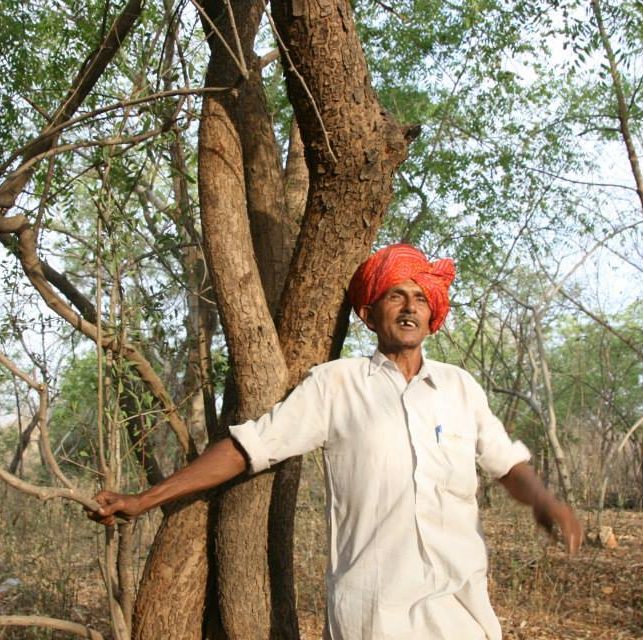
Bhagwan Lal, 56 years old, is one of the founding Gunis of JJVS. He started work with JJVS in 1989 when the revitalization of traditional systems of medicine first became an initiative of the NGO. He helped organize the first Guni health camps, has identified many additional traditional healers and worked to enhance his impact in the greater community. Bhagwan learned about traditional medicine from his father, who died at a young age before he was able to pass all of his knowledge to his son. At age 20, he started treating people with herbal balms and teas from his farm and the local jungle. He never has to buy any plants he used in his treatments and treats 3-4 patients daily. Bhagwan specializes in arthritis, diabetes, and myotherapy – which he learned from visiting foreign myotherapists at JJVS. His treatments have been recognized by JJVS Ayurvedic doctors for their effectiveness, which has increased the larger communities’ trust in traditional medicine and widened his impact in his community. Thanks to JJVS, he is so well known that patients come from far away to be treated by him. The Guni Training cum Treatment Center, a clinic that was recently built by JJVS, is a sustainable and more easily accessible place for Bhagwan to treat patients and share knowledge with other Gunis. He also treats patients at an Ayurvedic hospital in a nearby village.
Bhagwan Ji became a Guni because he saw that poor people cannot pay for treatment at hospitals and get into serious debt. Bhagwan Ji provides low-cost and free treatment for the poor of his community. He does not offer special treatment to his well-off patients, and he thinks it is very important to pass on ancestral knowledge about traditional medicine. His wife, sons and daughters have learned about traditional medicine from him, and he is currently training 3 practicing Gunis through JJVS. He teaches all of his students the following things: to converse with patients and try to lift their spirits, to never work for money, and to always be humble and respectful when working with patients. The Gunis he now trains were previous patients of his who were so grateful for his treatment that it inspired them to give back to their communities in the same way. Bhagwan is equally inspired by JJVS as an organization and grateful for their support in his ancestral healing practice.
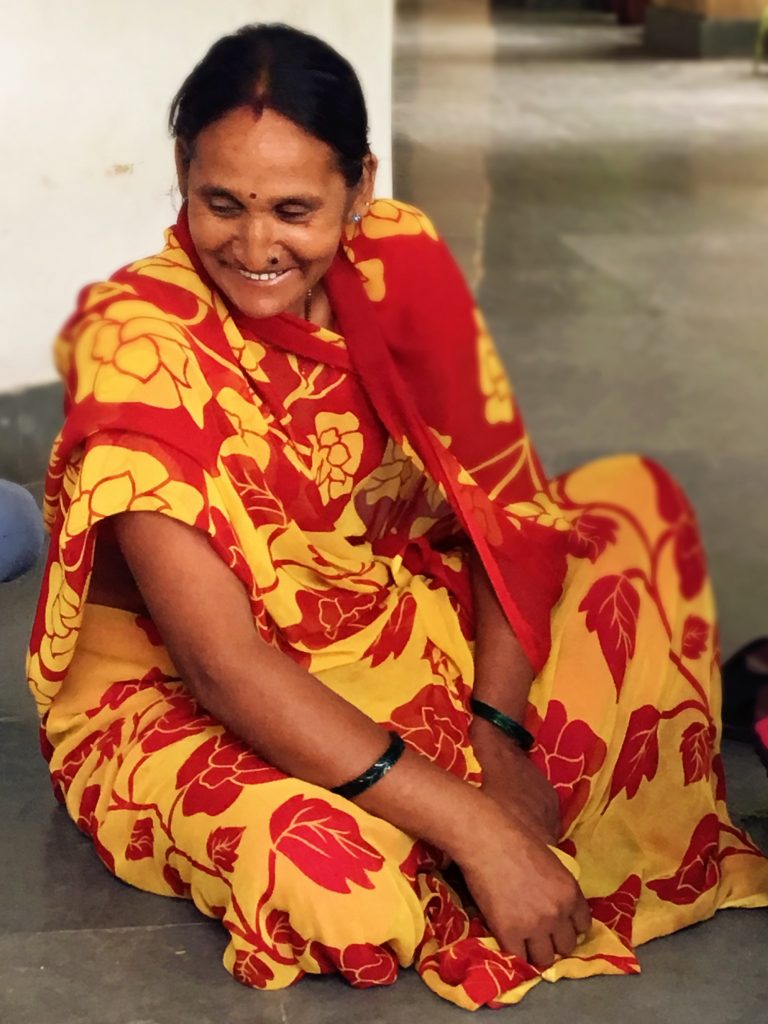
Babli
Bai
Babli
Bai
Babli Bai’s personal experiences, education in healing and resulting confidence have inspired and enabled her to become an advocate for and teacher of women’s health in her village.
Babli Bai Kharadi is a 45-year-old female Guni who runs a clinic with Shanti Lal nearby Jaisamand Lake. She spent most of her childhood doing housework while her five brothers went to school. Her parents, both farmers, did not think it was necessary for her to go to school, and she is still illiterate to this day. In the mornings, she would wake up at 5 AM and climb the nearby mountain to collect grass for the cows, carrying baati, a thick Indian bread roll, for breakfast. After coming down the mountain, she would take the cattle to drink at a pond or well, do housework, and then travel up the mountain again to collect more grass in the evening. Most days, she climbed the mountain three times, often carrying heavy bundle of grains on her head. At age 20, she was married to a farmer in the village and they have one son.
Growing up, Babli Bai had been to the forest and knew the names and uses of some plants. Her father was close friends with Guni Shanti Lal, so she often overheard him talking about his work. At age 26, she received herbal treatment for migraine and menstruation pain by Shanti Lal. She was inspired by his treatment and wanted to learn this healing art for herself and her family. After receiving the support of her family and village, she was able to become his apprentice. He and JJVS have trained her in Panchkarma, Aaditherapy, medicinal plants, Myotherapy, and midwifery. Today, she helps not only herself and her family but also the greater community. Thankfully, both her husband and family support her. She is very grateful to Shanti Lal for treating and training her, and to JJVS for training her teacher and then continuing to teach both of them new techniques and skills. JJVS has helped her become well-known in the area, thereby widened her impact as a healer. After receiving treatment, skeptical patients become appreciative of the inexpensive and skilled care she provides.
At the clinic, Shanti Lal sees all the male patients while Babli Bai sees all of the female patients. Some common rural women’s health issues include joint and back pain, headaches, menstruation pain and white discharge, which causes pain and weak joints. Emergency transportation to the hospital when women go into labor is also a prominent issue in this rural community. Her brother’s wife went into labor, and the jeep that was supposed to take her to the hospital was late so that Babli Bai, also pregnant at the time, ended up delivering the baby. She is currently training 3 female Gunis in nearby villages.
Babli Bai feels that a lack of education has led to many women’s health issues. She remembers the first time she had her period. She was in the field and was very scared by the mysterious pain and blood that was coming out of her. Forced to come home at 8 PM that night, she did not tell anyone what happened to her and was visibly upset. Eventually her brother’s wife asked her what happened and explained to her that this was normal and would happen every month. The woman brought her food and tea to calm her nerves and told her about the cloth that she would have to wear and how to wash it. She realizes that many girls do not have someone who will teach them about their periods or health. Mothers do not talk about these things with their daughters and there is a heavy societal stigma against this natural process. Few women know about proper feminine hygiene and many are too shy to discuss it with others. Without a job, women do not have the money to buy proper pads or cotton for their periods. Babli Bai has seen dupattas, thin polyester scarves, being used as sanitary pads in the villages, but this cloth is not absorbent and if not properly dried, can cause infection and painful white discharge. Women are not able to dry their dirty pads outside because men cannot see them, so the pads are dried indoors and often remain damp. Many male and female Gunis have mentioned menstruation pain and white discharge as one of the most prevalent health issues in the villages. Babli Bai feels comfortable talking about the root of this issue with other women because she knows that the best preventative solution is proper education.
Babli Bai was not always this confident and open when talking about these heavily stigmatized topics. She grew up in a society where women do not typically speak in front of men. Women’s health issues are not talked about with other women or known about by the greater society. As Babli Bai’s knowledge about Guni healing and medicine slowly increased, so too did her confidence. She was never sent to school by her parents and cannot read or do any calculations for the clinic, so someone else must do it for her and this made her feel bad about herself. For this reason, she thinks that studying and getting an education is very necessary for girls, and that every girl should be sent to school.
Kalu Lal Meena
Kalu helps and treats anyone who comes to him regardless of their ability to pay, and if the patient insists on paying he never accepts a payment greater than 50 rupees (less than $1 US)
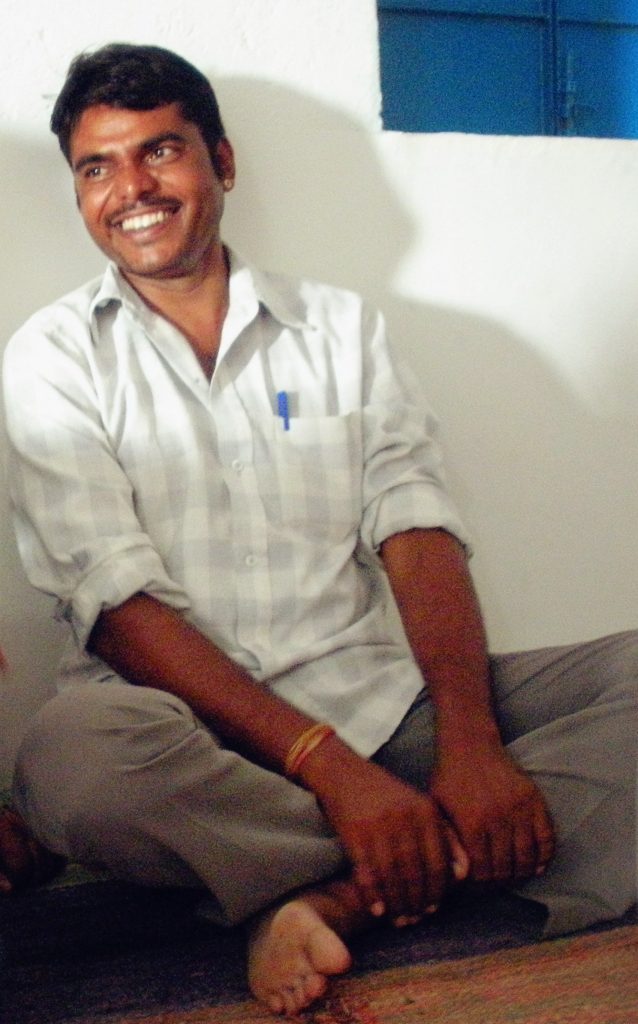
At 38 years old, Kalu Lal Meena has managed to earn the respect of both his community and JJVS through his work as a Guni. His father was also a traditional healer, and while he died when Kalu was very young, he managed to pass on extensive knowledge and skills that Kalu uses to this day. Kalu always observed his father as he treated his patients and was often tasked with fetching medicinal plants for him. As he grew older, he was encouraged by his mother, members of his community and older traditional healers to pursue healing as a career. Seeing the need for health care in his village and the lack of doctors and income to pay for treatments, Kalu decided to commit to becoming a healer in order to aid his village. Soon he became very well known, and people would seek him out in order to receive treatment for various ailments. Today, Kalu helps and treats anyone who comes to him regardless of their ability to pay, and if the patient insists on paying he never accepts a payment greater than 50 rupees (less than $1 US).
As a leader and healer in his community, Kalu has noticed recurring health problems in his patients. Knee pain is very common in men who perform labor-intensive work, as well as women who have to walk long distances and take care of multiple children. This knee damage is exacerbated by the way many people in India tend to sit when eating food or relaxing- a cross legged position that is extremely harsh on the ankles and knees. Other prevalent health problems that Kalu has noticed in his community are diabetes and arthritis. His insights on rural health issues are very important for future health campaigns and development projects that specifically target the needs of villagers.
Since joining JJVS, Kalu has been able to expand his skill set and become trained in both myotherapy and panchkarma. He is currently training healers in myotherapy, but thinks that it is equally important to pass on humility and good work ethic to his students. He says that in order to maintain a good reputation in the community, a healer must always remain focused on his work and provide optimal treatment to his patients.
While JJVS has helped Kalu become a successful Guni, he has identified many challenges that he and other traditional healers need to overcome. For example, he must constantly prove himself to allopathic doctors who see Gunis as competition. Many times doctors do not understand or even attempt to understand traditional medicine, and they are skeptical of his knowledge and expertise to the point of disrespect. Despite this, Kalu says he will continue to improve his name and his practice, taking pride in his service to those who would otherwise not have the means to receive any form of health treatment.
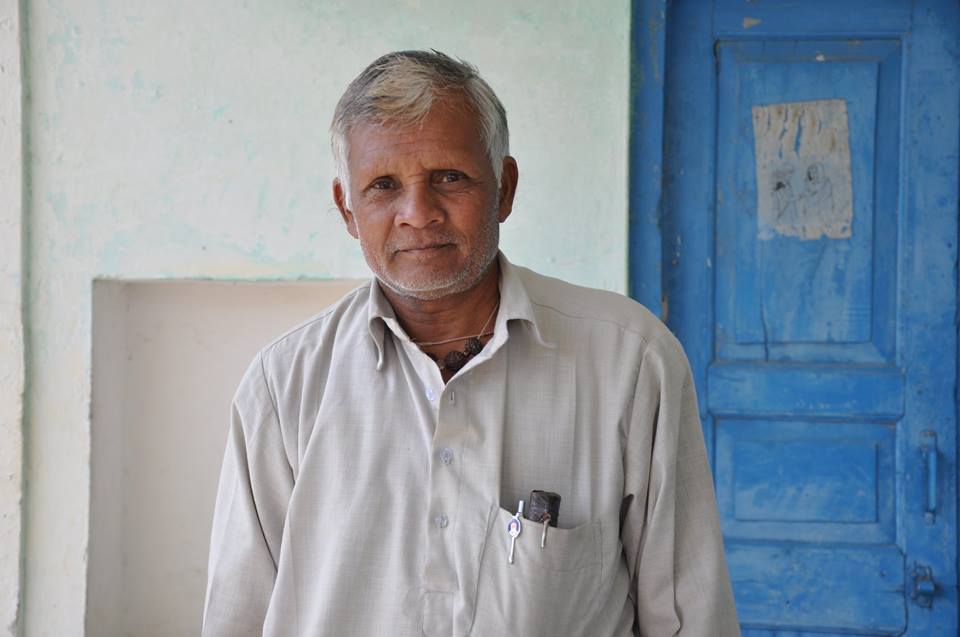
Anand Meena
Anand Meena is a resident Guni at the Udaipur office of JJVS. Born in 1955, he has been working with Jagran for 6 years and has received trainings in Myotherapy and Aaditherapy. His father was a revolutionary politician and part of the local panchayat during the fight for Independence from Britain. Following the expensive campaign that resulted in his father’s election into office, the family was in financial crisis for many years. After leaving school in the 5th standard, he got married at age 15, a common age among tribal villagers. He began to farm and sell vegetable and dairy products, and he also got involved in illegal smuggling for a time. His first cousin was a Guni and insisted that Anand leave his other sources of income and learn about traditional medicine from him. However, following this training he became very ill for 7 years – he believes from a curse from someone in his village. Seeking treatment, he found his teacher, a spiritual healer who cured him of his 7-year illness. Anand Ji was inspired by this healer and asked to train under him so that he could fight all of the evils in this world and help people recover from illnesses. His teacher taught him about all of the medicinal plants that he knew and Anand became a skilled healer in the village.
After being identified by JJVS, he immersed himself fully in learning new skills, collaborating with other Gunis, and utilizing JJVS resources. Through JJVS, he has come to know about medicinal plants from many different parts of India and how to grow them in different environments. He has also been trained in Aaditherapy, an ancient art to India that focuses on putting pressure on different points of the body to help alleviate pain. With greater recognition through JJVS, he now earns more money and is able to see more patients. He was even recognized for his Guni skills in Delhi, which makes him very proud and happy that he and his profession are receiving respect for their work.
In early times, the villagers did not trust or respect his Guni knowledge. Few people were literate, and many did not understand Ayurvedic medicine and preferred the allopathic medicine in hospitals and government clinics. From his personal experiences, Anand Ji feels that allopathic medicine is very expensive and does not address the root problems of various health issues in the same way as Ayurvedic medicine. Allopathic medicine sometimes results in unexpected reactions in the body and does not provide the mental peace necessary for complete healing. People now want an instant cure for their problems and do not care about potential side effects of taking multiple pills. In addition to the ineffectiveness of allopathy, the nearest hospital in his village is 10 kilometers away, a dangerous and expensive distance to travel in case of medical emergencies. In the past, the people only went to Anand Ji as a last option, but now, thanks to the recognition and training that he has received from Jagran, many people trust his knowledge and come to him for treatment of common illnesses.
To Anand Ji, a Guni is someone who has extensive knowledge on herbal medicine and techniques for muscle and bone pain alleviation. It is a profession for people to earn an income, but those who do it are not interested in money. He is currently teaching his daughter and daughter-in-law, after having them help him make medicinal powders and balms and noticing how much they enjoyed the work. In his opinion, Gunis are needed now more than ever. In earlier times, the only option for treatment was ayurvedic medicine, and food was fresh and healthy. Now, according to Anand Ji, everything is polluted and not fresh. People eat bad things for their health, and their poor diet has resulted in many new diseases. Where before there was only fever and malaria, now there is diabetes, acidity, cancer, joint pains, back pains and arthritis. No one is directly responsible for this change, he recognizes – it has happened with the changing times, where people exercise less, sleep less and eat less healthy foods. Packaged and processed foods like pizza, burgers and chips are now in the village, and old traditions have been forgotten or lost. People used to burn medicinal plants to prevent malaria, but now they do not because western culture is more prevalent.
Shanti Lal Raikwal
A man in Shanti Lal’s village was badly beaten up by a group of local boys. Shanti Lal treated him for 14 days. Fully recovered, the man was so grateful that he asked Shanti Lal if there was any way to repay him. Shanti Lal explained that his dream was to have his own clinic. The man offered a part of his own home for Shanti lal’s clinic.
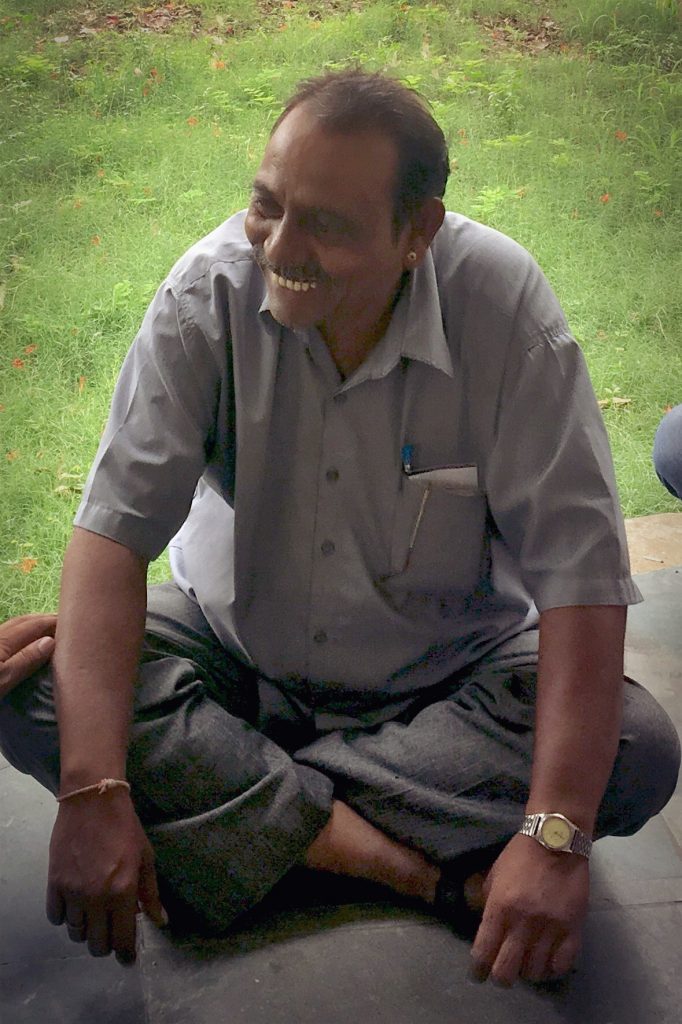
Shanti Lal Raikwal, 45 years old, is a Guni skilled in Myotherapy, Panchkarma, Aaditherapy and Ayurveda and shares a successful clinic with female Guni Babli Bai nearby Jaisamand Lake. He grew up in a very poor family. His father was a farmer, but would sometimes help people with minor health problems using medicinal plants. At age 15, he started learning about medicinal plants from an elder in the village, Kamla Maharaj, who treated and healed people for free in his Holy Temple. The village suffered from diarrhea, dysentery, joint and knee pains, blood clots, migraines, and leukorrhea. As he remembers it, everyone had poor health. After studying under his guru, he worked at a Ayurvedic pharmacy for three years to learn about other plants and treatments.
After working with JJVS for 7 years, he was able to go to Kerala in South India to learn about Myotherapy from an Australian myotherapist who was on-staff with JJVS at the time. It was a great experience, and he brought this new training back to the Gunis working with JJVS. Several years later, he went back to Kerala to learn about Panchkarma, and has taught Panchkarma therapy to many Gunis in Rajasthan through JJVS-organized health camps. He finds it very important to share his knowledge with others. If he suddenly dies, he does not want his skills to die with him. Shanti Lal has worked with JJVS for 22 years.
A man in Shanti Lal’s village was badly beaten up by a group of local boys. Shanti Lal treated him for 14 days. Fully recovered, the man was so grateful that he asked Shanti Lal if there was any way to repay him. Shanti Lal explained that his dream was to have his own clinic. The man offered a part of his own home for Shanti lal’s clinic. At the clinic, he and Babli Bai treat six patients daily, sometimes up to twelve. In the future, he and Babli Bai hope to build a second floor in the rural clinic so that they can provide accommodations for patients over-night. They also travel 70 kilometers to Udaipur every Saturday and Sunday to sell medicinal plants to patients in the city. The common health issues in the village include eczema, diarrhea, vomiting, bile and itching, but new diseases like hypertension, kidney stones and diabetes are increasing in prevalence. Food was always fresh and natural in the past, but now people are developing bad eating habits. In the cities, he has noticed that people have weaker immune systems, more chronic diseases such as diabetes and hypertension and lifestyle-related conditions such as joint pain, lower back pain, migraines, bodily stiffness and hemorrhoids. Many people in the city do not get their health issues checked out until it is too late due to their busy and stressful schedules, and take a longer time to recover due to their unhealthy eating and lifestyle habits.
Realizing the benefit of medicinal plants, he now tries to educate and change the mind-set of people toward naturopathic medicine. Many people in the village know about medicinal plants but those in the city have no knowledge of them and throw them away instead. People did not trust the Gunis at first, preferring allopathic doctors and spiritual healers. He feels that people do not always realize the amount of work that goes into becoming a skilled and knowledgeable Guni. Shanti Lal, like many other Gunis, does not want this healing art to die with their generation. He feels very happy to treat his patients and works as a Guni to give back to the people. He is currently trainings three males Gunis by watching them treat patients and taking them to the jungle to collect medicinal plants.
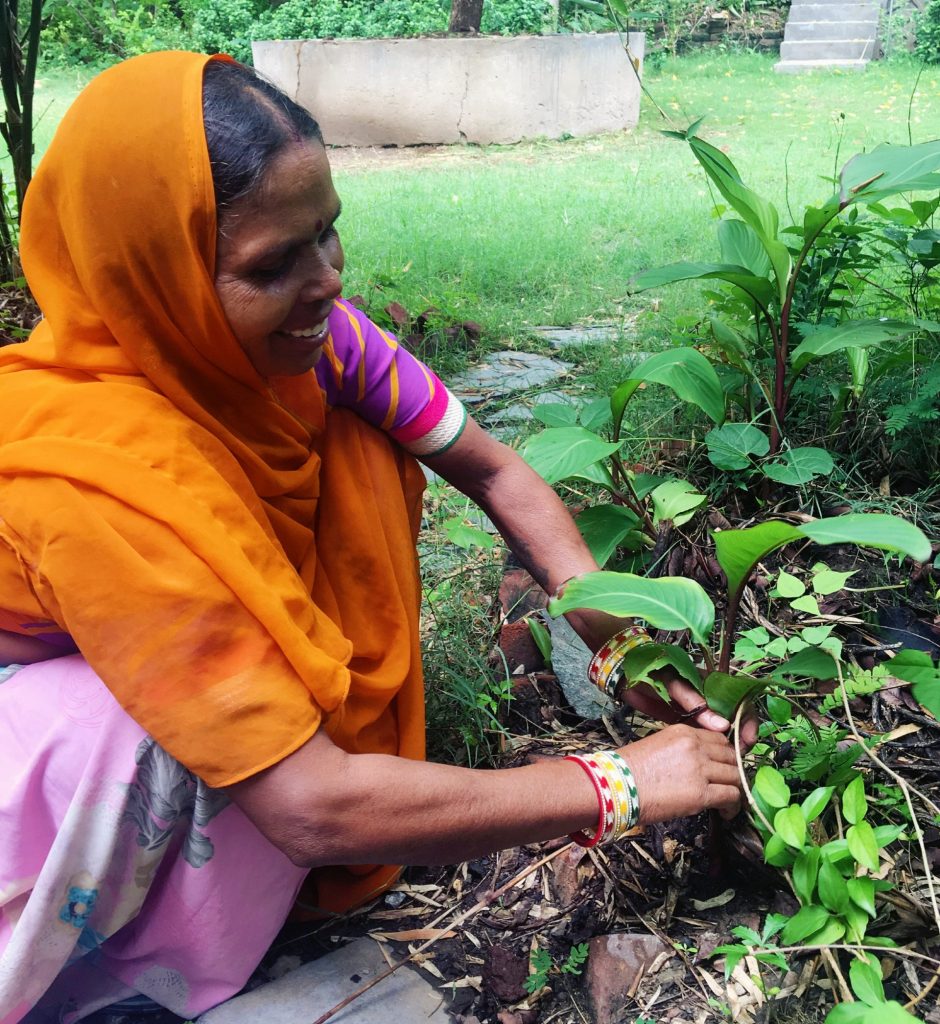
Tamu Bai
At times it was challenging to work as a Guni while raising her 6 children.
Tamu Bai is a female Guni in her late 40s. Her father, mother, grandfather and grandmother were traditional healers. She started learning this ancestral knowledge at age 15 in between household work while her brothers were studying in school. Even today, she is illiterate and can only write her name because she learned the shapes of those letters in the mud. She was married at age 18 and began formal Guni training with her grandfather shortly afterward. Her husband, a farmer, was supportive of her lessons and learned about medicinal plants by collecting the plants and mixing them together for her. Tamu Bai learned about bone setting from her grandfather, as well as treatments for jaundice, fever, hemorrhoids, leukorrhea, menstrual pains, vomiting and diarrhea. She learned about traditional midwifery from her grandmother and along with working as a traditional birth attendant, treats prolapsed uterus as well.
Tamu Bai already had 20 years of experience working as a Guni in her village when she joined JJVS at age 35. After receiving training in Myotherapy, she has been able to treat more patients and receive a greater income for her family of 6 children. She is currently training her daughter to become a Guni so that she will also have a source of income once she is married. While allopathic care is available in her village, it is very expensive. She has noticed that more people are seeking her out for treatment due to the publicity she has received from JJVS and the success of local health camps. Various women are also interested in receiving training from her now that JJVS has recognized and encouraged Guni work as a professional pursuit. However, it has become difficult to find the medicinal plants of her ancestors because of decreasing biodiversity in the forests.
Working as a Guni has boosted her confidence and self-esteem. People come from many different areas to ask her about their illnesses, and she feels internal satisfaction in seeing her knowledge used for the betterment of her people. She sees around 20 patients per week, most of whom are women. Younger women especially are very hesitant to receive treatment from elderly male Gunis and talk about their health problems. As an adolescent girl, she too was shy and only asked her mother about women’s health issues after marriage and childbirth. At times it was challenging to work as a Guni while raising her 6 children, but her mother used to help her, and her village saw no issue in her traveling for health camps and training. Tamu Bai hopes that in the future there will be more Gunis so that her profession becomes a viable and prominent healthcare option in rural areas.
